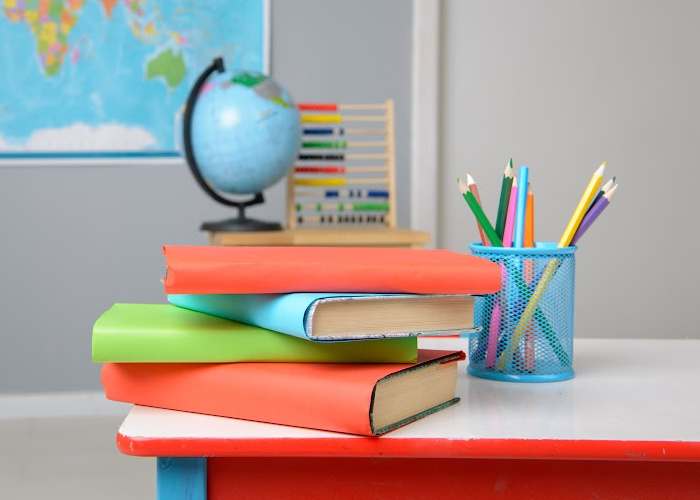It's crucial to know that students with autism and ADHD need special study strategies. Autism…

How to Help an Autistic Child in the Classroom
If you are a teacher or educator, you may have an autistic child in your classroom. Autism can present unique challenges that require specific strategies and support to best facilitate learning and development. In this section, we will provide you with practical tips and guidance on how to help an autistic child in the classroom.
Firstly, it is important to understand that autism is a neurodevelopmental disorder that affects a child’s social communication skills and behaviour. This can impact how they learn, interact with others, and participate in classroom activities. It is essential to create an inclusive and supportive environment that meets the individual needs of each autistic child in your class.
Throughout this article, we will discuss effective strategies for teaching, supporting, and including autistic students in your classroom. By implementing these strategies, you can create a safe and nurturing environment that fosters optimal learning and development for all students.
So, let’s explore how to help an autistic child in the classroom, and how you can make a positive and long-lasting impact on their education and wellbeing.

Understanding Autism in the Classroom
If you’re an educator, it’s important to understand the impact of autism in the classroom. Autism is a neurodevelopmental disorder that affects communication, social interaction and behaviour. Autistic students may experience difficulties in areas such as sensory processing, language development, social cues, and executive functioning.
As a teacher, it’s important to have a good understanding of the individual needs of your autistic students. This will help you to create effective teaching strategies that promote their learning and well-being.
Strategies for Teaching Autistic Students
When it comes to teaching autistic students, there are several strategies that have been found to be effective. These include:
- Breaking tasks down into small, manageable steps
- Using visual aids such as pictures and diagrams to support learning
- Providing a structured, predictable routine
- Using positive reinforcement to encourage desired behaviours
- Encouraging participation in areas of interest
It’s important to recognise that each autistic student is unique, and what works for one may not work for another. Therefore, it’s important to take an individualised approach to teaching, by understanding the strengths and areas of difficulty for each child.
By being aware of the challenges that autistic students may face in the classroom, and by implementing effective teaching strategies, educators can help to create an inclusive and supportive learning environment for these students.

Creating an Autism-Friendly Classroom Environment
Autistic students thrive in inclusive education settings that cater to their unique needs. As a teacher, there are several ways you can create an autism-friendly classroom environment that promotes learning and well-being. Here are some strategies to consider:
| Sensory considerations | Many autistic students may be sensitive to sensory stimuli, such as loud noises or bright lights. To accommodate their needs, you can provide a quiet corner in the classroom where they can retreat to when feeling overwhelmed. You can also use noise-cancelling headphones or provide weighted blankets to help them regulate their sensory input. |
|---|---|
| Visual supports | Visual aids can be extremely helpful for autistic students who may struggle with verbal communication. You can use visual schedules, picture cards, or written instructions to help them understand the expectations and routines in the classroom. These can also help them feel more in control of their environment. |
| Structured routines | Autistic students thrive on predictability and routine. Establishing clear routines and expectations can help them feel more secure and confident in the classroom. You can use visual schedules or timers to help them understand the length and structure of different activities. |
By incorporating these strategies, you can create a more inclusive and supportive classroom environment for autistic students. Remember, every student is different, and it’s important to tailor your approach to meet their individual needs.

Effective Interventions for Autistic Children
If you have an autistic child in your classroom, it is essential to understand that there is no one-size-fits-all approach to teaching strategies. Effective teaching for autistic students requires individualized attention and tailored interventions. Here are some strategies that have proven to be effective in supporting the learning and development of autistic children:
| Intervention | Description |
|---|---|
| Visual Aids | Visual aids such as pictures, diagrams, and charts can help autistic students understand abstract concepts and instructions better. Visual aids can also help them anticipate changes in their routine, which can be a source of anxiety. |
| Social Stories | Social stories are short, personalized stories that explain social situations and interactions in a clear and straightforward way. These stories can help autistic students navigate social situations and understand what is expected of them. |
| Individualized Education Plans (IEPs) | An IEP is a legal document that outlines the educational goals, accommodations, and support that an autistic child requires. It is essential to work collaboratively with parents and guardians and other professionals to develop and implement an effective IEP. |
It is crucial to note that these interventions should be used in conjunction with a structured and predictable classroom routine. Autistic children can benefit from consistent routines and may struggle with unexpected changes, which can cause anxiety and distress.
Furthermore, using positive reinforcement and clear expectations can encourage autistic children to engage and participate in classroom activities. Praise and rewards for positive behaviour can help boost confidence and provide motivation, leading to better learning outcomes.
By implementing these effective interventions and teaching strategies, you can support autistic children’s learning and development in the classroom.

Providing Accommodations for Autistic Students
Providing accommodations for autistic students is crucial for creating an inclusive and supportive classroom environment. These accommodations can take many forms, including:
- Use of assistive technology, such as text-to-speech software or visual schedules
- Modifications to the physical classroom environment, such as the use of noise-cancelling headphones or a designated quiet area
- Individualized education plans (IEPs) that outline specific accommodations and goals for the student
It is important to note that accommodations should be individualized to meet the unique needs of each autistic student. This may require ongoing communication with the student and their parents or guardians to determine what works best for them.
Additionally, providing specialized support for autistic children can greatly enhance their learning experience. This may include:
- Support from teaching assistants or aides who have experience working with autistic students
- In-class support from speech therapists or occupational therapists
- Access to social skills training or counselling services
By providing accommodations and specialised support, you can ensure that autistic students have access to the tools and resources they need to succeed in the classroom.

Promoting Social Inclusion and Peer Interaction
Supporting autistic children in school requires creating an inclusive and welcoming environment where social interaction is encouraged. Here are some strategies to help promote social inclusion and peer interaction:
Peer tutoring: Encourage peer tutoring by assigning students to work in pairs or small groups. This will help students with autism learn from their peers and build positive relationships.
Social skills training: Provide social skills training to develop the necessary skills for successful social interaction. Role-playing and social stories are useful tools for teaching social skills in a safe and structured environment.
Fostering positive relationships: Encourage positive relationships between autistic students and their peers by promoting empathy and understanding. Teach students to recognise and appreciate individual differences and to be respectful and supportive of one another.
Creating opportunities for social interaction is essential for the social and emotional well-being of autistic children. Inclusive education for autistic students means helping them develop social skills and supporting their social interactions with their peers.

Collaboration with Parents and Guardians
Collaboration with parents and guardians of autistic children is essential to create an inclusive education environment. By involving them in the decision-making process, you can gain valuable insights into the child’s needs and develop effective strategies for their academic and social success. Open communication and regular updates are an integral part of this collaborative effort.
It is important to establish a positive relationship with parents and guardians, as they are the child’s primary support system. Encouraging them to share their thoughts and providing them with meaningful feedback will help build trust and foster a sense of community.
Regular progress reports and meetings should be scheduled to provide updates on the child’s academic progress, social interactions, and any accommodations or modifications made to support their learning. This will also give parents and guardians the opportunity to ask questions, provide feedback, and share their own insights into the child’s needs.
Collaboration with parents and guardians is a crucial part of inclusive education for autistic students. By working together, we can create a supportive learning environment that meets the unique needs of each child and promotes their academic and social success.
Conclusion
Caring for and supporting autistic children in the classroom requires a dedicated and compassionate approach. By implementing the strategies and tips outlined in this article, you can help create an environment that fosters learning, development, and well-being for these students.
Remember, understanding autism and its impact on learning is key to successfully supporting autistic students. From creating an autism-friendly classroom environment to providing effective interventions and accommodations, every aspect of the learning experience should be tailored to meet the needs of each individual student.
Promoting social inclusion and collaboration with parents and guardians is also crucial for creating a cohesive and supportive learning environment. By working together, we can create a more inclusive and supportive education system that embraces and celebrates neurodiversity.
So, whether you are a teacher, teaching assistant, or other education professional, know that your efforts to support autistic children in the classroom are invaluable. By prioritising their needs and creating an environment that values neurodiversity, we can help these students succeed and thrive.
Frequently Asked Questions
How can I help an autistic child in the classroom?
There are several ways to support autistic children in the classroom. Some key strategies include creating a structured and predictable routine, using visual aids and supports, providing clear and concise instructions, and promoting social inclusion and peer interaction.
What is autism and how does it impact a child’s experience in the classroom?
Autism is a neurodevelopmental disorder that affects a person’s ability to communicate, socialize, and engage in repetitive behaviours. In the classroom, autistic children may face challenges with sensory processing, social interaction, and understanding verbal instructions. It is important to provide appropriate accommodations and support to help them succeed.
How can I create an autism-friendly classroom environment?
To create an autism-friendly classroom, consider incorporating sensory considerations such as providing a quiet space, using visual supports like visual schedules and cues, and establishing structured routines. Creating a predictable and supportive environment can help autistic students feel more comfortable and engaged in their learning.
What are some effective interventions for autistic children?
Effective interventions for autistic children include using visual aids and supports, implementing social stories to teach social skills, and developing individualized education plans (IEPs) tailored to their specific needs. It is important to provide targeted interventions that address their unique challenges and strengths.
How can I provide accommodations for autistic students?
Providing accommodations for autistic students may involve using assistive technology, making classroom modifications such as reducing sensory distractions, and ensuring access to specialized support professionals like speech therapists or teaching assistants. Individualized accommodations can help autistic students fully participate in the classroom and reach their potential.
How can I promote social inclusion and peer interaction among autistic children?
Strategies for promoting social inclusion and peer interaction among autistic children include implementing peer tutoring programs, providing social skills training, and fostering positive relationships within the classroom. Encouraging opportunities for collaboration and understanding can help autistic students develop social skills and form meaningful connections with their peers.
How can I collaborate with parents and guardians of autistic children?
Collaboration with parents and guardians is crucial for supporting autistic children in the classroom. Open communication, regular updates on progress, and involving parents in decision-making processes can help create a strong partnership that supports the child’s development and learning.



This Post Has 0 Comments